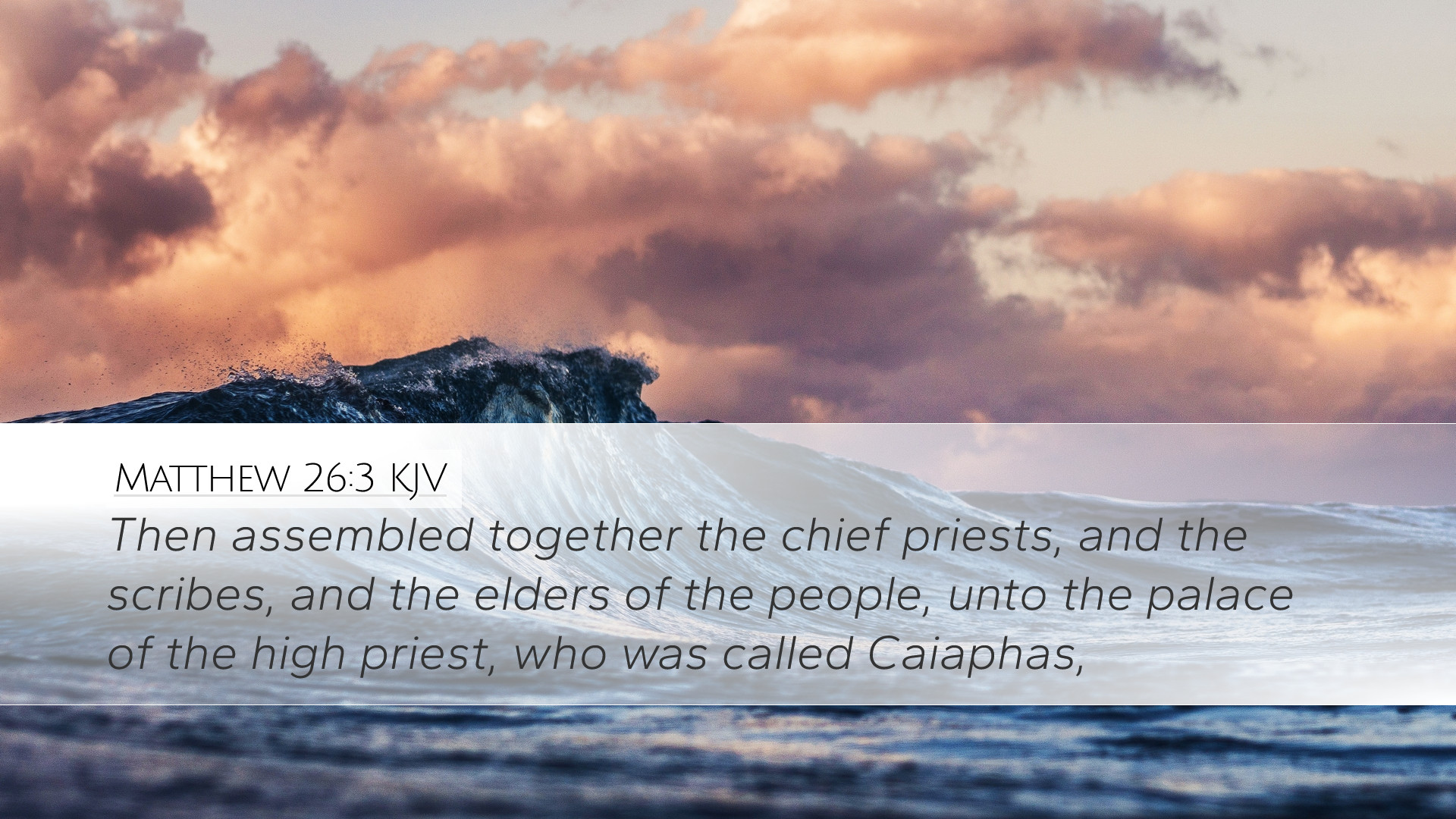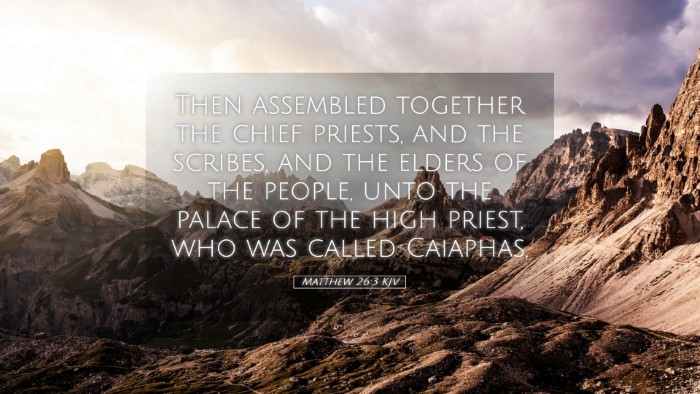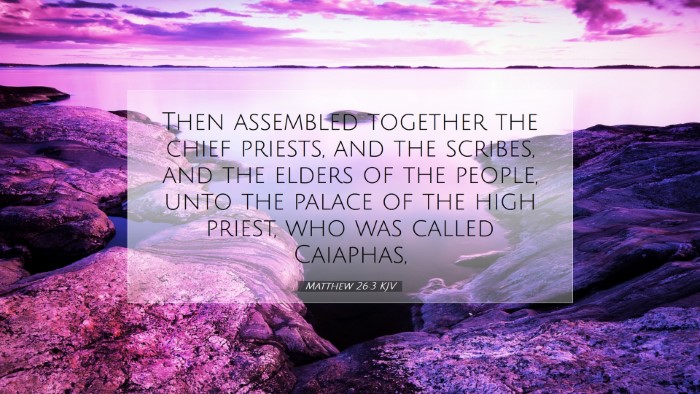Commentary on Matthew 26:3
Verse Context: The verse Matthew 26:3 reads: "Then the chief priests, and the scribes, and the elders of the people, assembled together unto the palace of the high priest, who was called Caiaphas." This sets the stage for significant events leading up to the crucifixion of Jesus, illustrating the conspiracy of religious authorities against Him.
Historical Background
Matthew Henry notes that this was a pivotal moment in the ministry of Jesus Christ. The conspiracy against Jesus by the chief priests and elders displays the growing animosity toward Him due to His teachings which challenged the established religious order.
Albert Barnes provides insight into the political and religious climate of the time, emphasizing that the collusion of these leaders was not merely a reaction to Jesus' popularity but also an effort to protect their own power and influence over the people.
Characters Involved
- The Chief Priests: Responsible for overseeing the Temple activities, they felt threatened by Jesus' authority and the following He gathered.
- The Scribes: Experts in the Law; their involvement signifies a formal opposition rooted in the understanding of Jewish law, which they believed Jesus violated.
- The Elders: Representing the Sanhedrin, their collective opposition illustrates a comprehensive front of leadership joining forces to eliminate what they perceived as a threat.
The Significance of the Assembly
Adam Clarke elaborates on the significance of this clandestine assembly. It highlights the premeditated nature of their plot against Jesus. While they gathered in secrecy, this act symbolizes a rejection of the truth that Christ represented. Their meeting displays the depths of their corruption.
This assembly is not just a gathering of men but a manifestation of spiritual blindness. As they plot, they overlook the very prophecies they claim to uphold, showing a complete disregard for God’s plan revealed in the Scriptures.
Theological Implications
This event is rich in theological implications. The gathering represents a formal declaration of war against the Messiah; however, Matthew Henry reminds us that God is sovereign over these events. While sinful men conspire, God’s plan of redemption is being fulfilled. This reflects the paradox of free will and divine sovereignty.
Albert Barnes adds that this moment reflects not only the rejection of Jesus by His own people but also underscores the universal human tendency to resist divine revelation. The leaders’ desire for power led them to a willful blindness against the truth that was manifest in Christ.
Practical Lessons for Believers
For modern-day believers, this passage calls for introspection about the attitudes towards authority and power. Do we, like the chief priests and elders, align ourselves with power structures that resist the call of Christ in our lives? Matthew Henry encourages believers to be vigilant against the subtle influences that drive individuals away from Christ.
Furthermore, the event challenges us to reflect on our commitment to the truth of the Gospel, ensuring that we do not become complicit in denying Christ through our actions or relationships. As noted by Adam Clarke, followers of Christ are called to a higher standard, reflecting the light of truth even in opposition.
Final Reflections
In conclusion, Matthew 26:3 calls attention to the calculated opposition faced by Jesus. It offers a stark reminder of the spiritual battles that exist behind physical actions. The conspiracy of the religious leaders was not just a historical event but a reflection of ongoing spiritual conflicts faced by the church today.
May this verse encourage pastors, students, theologians, and scholars to study the Scriptures deeply, recognizing both the historical context and the enduring spiritual truths that emerge from these passages. Understanding this plot to kill Jesus reveals much about human nature and the persistent struggle against God’s authority that continues to this day.


